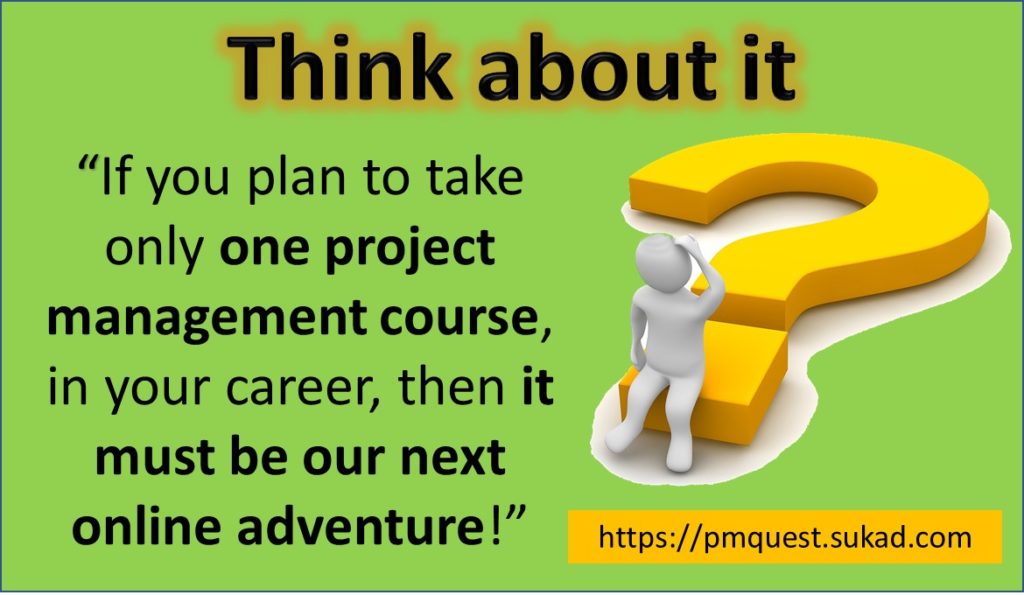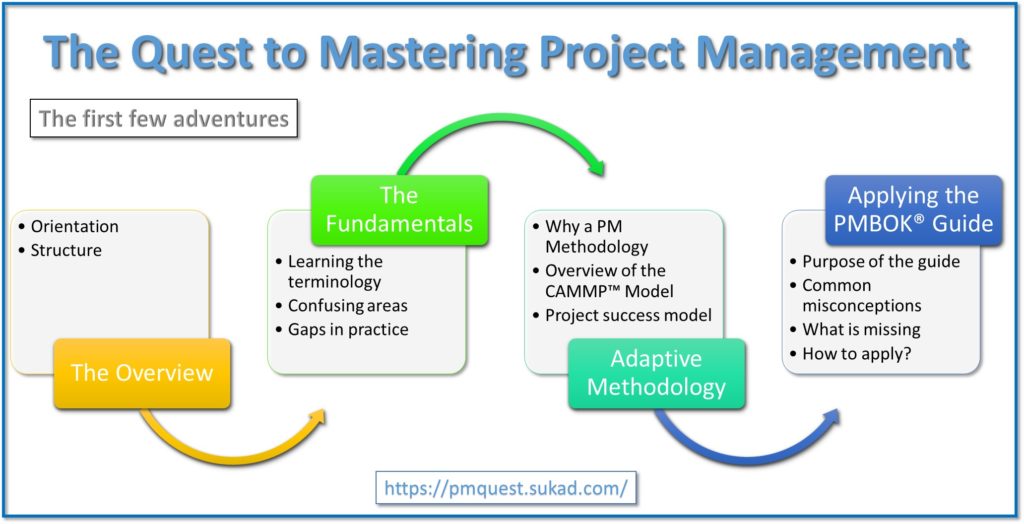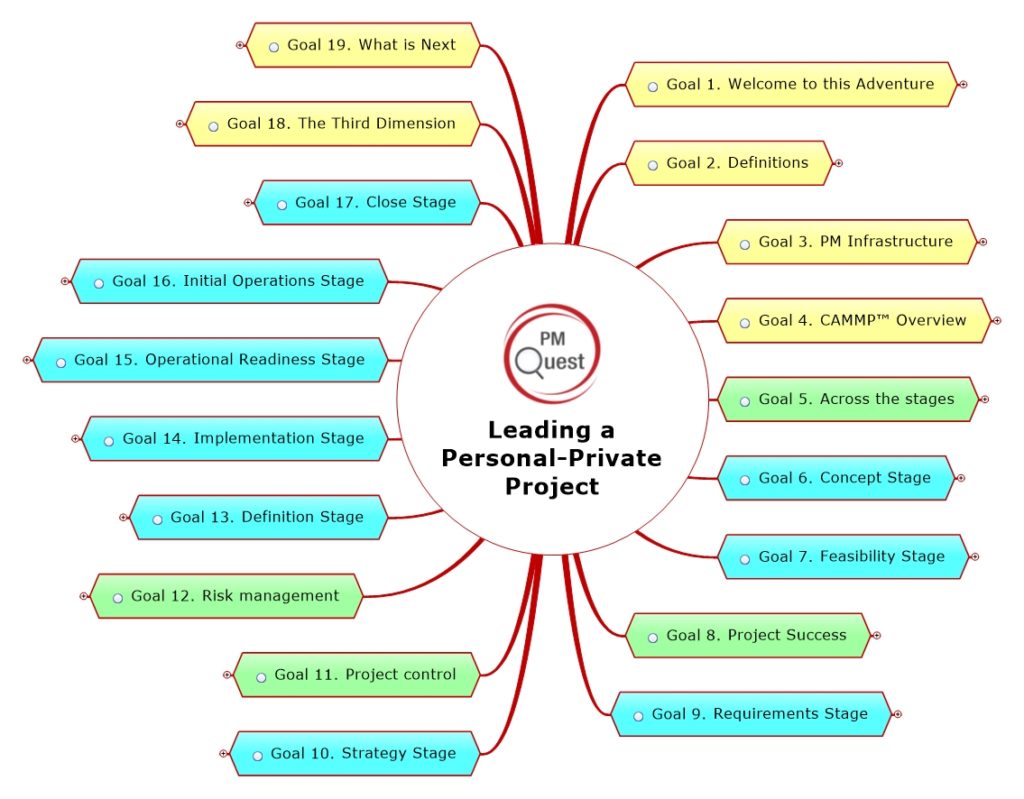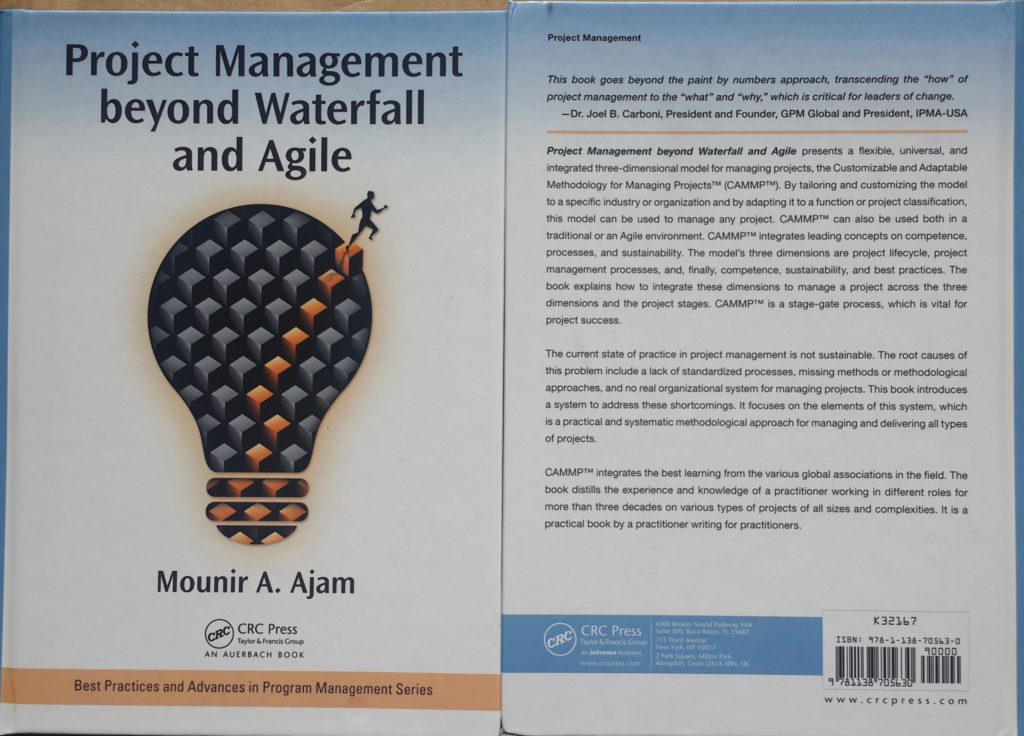It is hard to share a document via social media, so we are documenting this offer via our blog site and YouTube channel. However, if you prefer a PDF copy, email us and we will share. This offer is open NOW and will remain open until mid-August 2018. If you like to join our applied project management program, (a) where we will be using a project-based learning approach, and (b) if you are willing to commit to learning how to lead a personal or private project using the SUKAD way™ and the CAMMP™ project management methodology, and (c) apply the concepts to YOUR real or realistic project, read on. This is a long post.
Let us start with a video
The video is accessible by clicking on the image.

Applied Project Management
We want to invite professionals to participate in a ‘Learning by Applying’ program. We want to help you learn real-world project management; learn a Project Management Methodology (a methodological approach) by applying what you learn on real, or realistic projects. This offer is in line with The SUKAD Way™ for Managing Projects, and our approach of Project-Based Learning (PBL). We have been delivering PBL programs via physical classes, but now we want to move this approach to the virtual world.
Always start with why
It is simple, we want to help people learn ‘applied project management.’ In other words, move away from theory and certifications to real-world application.
Why? Because project management is an applied domain and it is best learned by doing. Why project management? Because applied project management will help you deliver projects better, faster, cheaper, among other benefits. Another, why? Because of our vision of advocating that project management is of all aspects of life; and all types of projects. What else? Our mission, which is to help YOU, be an agent of change and a catalyst for development in your work, community, and nation.
Once more, why?
Because YOU CAN!
Background
As you probably know, earlier this year, SUKAD launched the PM Quest, The Quest to Mastering Project Management, with a dedicated LMS site (Learning Management System). The site URL is https://pmquest.sukad.com.

At the time of writing this message, we have the programs (in the image) active on the site. The first one is free; the second one is free but with the purchase of any other online course, and the last two are paid courses.
What do we want to do now?
Now, we want to work on the next online course. This upcoming program is an expanded version of the third course above. The third course covered the concepts related to The Customizable and Adaptable Methodology for Managing Projects™, CAMMP™. However, the next one we will deliver a CAMMP™ program using the effective project-based learning approach. We want to help you learn a project management methodology. We want you to learn how-to-apply CAMMP™. This is why applied project management is the future of PM.
What is the PBL, Project-Based Learning approach?
The PBL approach is a blended learning approach that combines classroom (physical or virtual) – with – the application of the learned concept on a real project, and – with – mentoring and coaching. That is a simplistic view of the PBL approach. A vital success factor here is the application of the concept of real, or realistic projects.
In our view, PBL is a leading practice in learning and development and building project management capacity and competence.
What are we offering?
We are offering you this outstanding online course, where you will learn a project management methodological approach, step-by-step, stage-by-stage. CAMMP™ is built on a project life cycle model, this is why we can use it to help you go from concept-to-closure on your project. Throughout the whole process, we will be guiding (mentoring and coaching) you. We are offering you this applied learning opportunity on a complimentary basis if you would agree to the terms that we list below. You do not have to pay anything for the duration of the program, which could be 3 to 6 months, depending on your project.
Project duration is an essential criterion for selecting a project
The project could be anything, however, since we are in a learning program, the projects have to be realistic and fit within the context. One of the main factors to consider is that the project, from idea to operation (concept-to-closure), should be 3 to 6 months and with a few resources. We can accommodate projects that will require up to a year, but anything more than this would be complicated.
What types of projects would be suitable?
The teams that have learned this model used it on these types of projects. Development of learning programs, opening a branch office, organizing a seminar series, planning a conference, developing a website, establishing a wedding collection (jewelry), establishing a knowledge management system, launching a food-truck operation, employee engagement program, building a multi-story parking lot, a mall foot-fall study, and many more.
Key factors to consider and remember
- Keep in mind that the CAMMP™ model applies to all types of projects regardless of size or complexity. However, we do have three major subsets of CAMMP™; one for small-simple projects, another model for medium-moderate complexity projects, and one more for large and complex projects. This course will follow the small-simple
- This is a learning program, and you do not have to do everything while you are in the program. You can practice some of the steps in the program; to ensure that you are learning how-to-apply the concepts. Later, you can revisit your activities if your project needs more work.
- We are helping you learn a methodological approach, with steps and stages. Think of it as an umbrella that shade your whole project. However, it would not be possible in this learning program to cover all aspects of project management. In other words, we are not here to “teach” you detailed estimating or scheduling techniques, or how to manage stakeholders or contractors. Each of these topics requires a great deal of in-depth coverage and one, or more, dedicated courses. We provide the umbrella and the flow, you need to learn the details.
What we are asking
All we ask is the following:
- Prefer that you have a small team, two to five people. However, if you are willing to work on a project on your own, we can accept this condition.
- You must have a project, real or realistic project, that we need to agree on. It should not be a confidential project, for the reasons we list next. However, if you have such a project, let us talk.
- The project must be a personal initiative, a private project; not for an organization. Although the concepts work on any project, organizational projects have a higher degree of complexity and confidentiality, and that will not fit with our intent for this specific program. We will have a similar program for organizations.
- You (all team members) must sign an agreement that you will share their work, the stage deliverables, and the whole case study, including any video sessions, if available.
- You (all team members) must sign an agreement that you will allow SUKAD to use that information as case studies that we can publish them (with proper credits to your team). Publishing the case studies could be in part or full case studies. We could publish as e-books, in a book, or in the PM Quest online program.
- We ask you to think hard before you join, and once you join, you commit to doing the work. If for any reason, you cannot deliver on your commitment, you would still be allowed to take the course part, but you will not be getting anymore coaching and mentoring.
In other words, a win-win situation.
We offer you the learning course (which would be priced around $500), and all of our support to take your project from concept-to-closure (C2C); not sure what would be the value of this to you.
In return, you allow us to publish the case studies that would help us spread the knowledge and recover some of the costs.
The process to: learn a project management methodology by applying
We will be starting to develop this online course in August 2018. The release will follow an incremental approach, where we will release the course in parts. We expect the time span will be about three to four months to release all of the content. The plan is to release one learning goal per week; give and take a couple of days.
Therefore, the learning sequence would be:
- We will release a learning goal (including all of its missions).
- You and your team will go over the content, review it, and perform any activities that we include in the missions. For the early goals, these could be answering questions, whereas for the other goals this will be more intensive.
- You submit the draft of your work for our review, corrections, suggestions, and clarification of misunderstood concepts.
- You will finalize and share your work after reviewing our feedback.
- We continue the process with every goal to the end.
Keep in mind, the tentative four months listed earlier is for us to release all content. Depending on your project, you might need more than four months or even six months to complete, which is fine. The material will be ready for you when you need it. In other words, learning is not limited to the four months’ release schedule.
Some teams might join us after the release of the whole program, and the offer will still stand. In other words, you have a choice, pay for the program or get it for free with our support in return for allowing us to use the case study.
How to lead a personal, private project using the SUKAD Way?
The adventure that we are offering will have three types of learning goals. The image below shows these goals and types. The actual course title could be revised but it is likely to be Leading a Personal-Private Project. We can other qualifications like using CAMMP™ or following a PBL approach.
 Type 1 (yellow)
Type 1 (yellow)
This type will be for the learning goals and missions that would be general topics, such as introduction to project management and CAMMP™, differences between process groups and project life cycle, among other topics.
Type 2 (blue)
These will be the project life cycle dedicated learning goals. There will be a goal for each stage of a project. Since there are nine stages in the standard SUKAD CAMMP™ model, then there will be nine learning goals here.
Type 3 (green)
These will be goals related to the project life cycle, but not dedicated to a given stage. These will be for managing across the stages and would include general topics such as estimating, project approvals, project control, and change management across the stages.
Please note, this image is only a tentative outline of the program. Once we complete the requirements stage and definition stage, the number of goals and sequence could vary.
Also notice, that we have injected the ‘across the stages’ goals between the stage-specific goals; we do this for two reasons (1) we place them near a related topic, and (2) to give you time to work on the stage deliverables, so we have learning goals that do not require intensive work on your part.
Final Words
This program is based on our last book, which you can see here.

We are covering the relevant content in the online course, so this book is not mandatory. However, if you like to purchase it, you can find it on Amazon or the publisher site (CRC Press).
How to join?
Let us know via email.
We already started working on the early stages of the project, we expect development work to start on 1 August and the first release of one or two general content goals in early August. So, if you want to join an applied project management program, and if you want to learn a project management methodology by applying, then hurry, we will not wait long.
End of Document

Trackbacks/Pingbacks